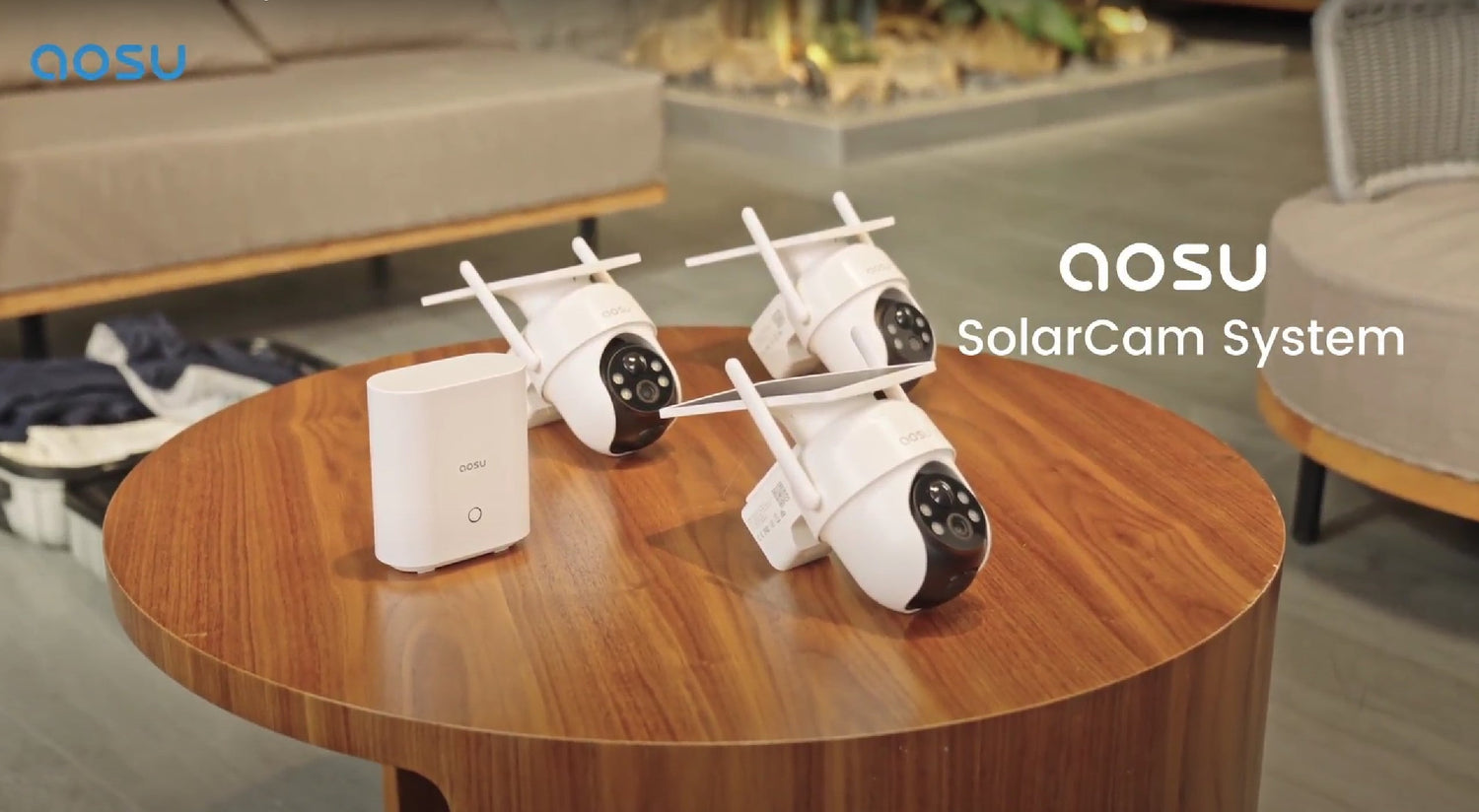When it comes to security camera systems, one of the most common questions people have is, "How long do security cameras keep footage?" The answer depends on several factors, including the type of storage system used, the camera's settings, and how much data is being recorded. Security cameras typically store footage either locally, on a hard drive or SD card, or through cloud storage services.
Each method has its own retention period, and it can vary from a few days to several weeks or even months. Local storage is limited by the available space, often leading to footage being overwritten once the storage reaches capacity. On the other hand, cloud storage can offer more flexibility, with retention times depending on your subscription plan. Understanding these factors can help you make informed decisions about how long you want to retain your footage and ensure your surveillance system aligns with your security needs.

How Long do Security Cameras Keep Footage
The length of time security cameras keep footage depends on several factors, including the type of storage used, the amount of footage recorded, and the settings you choose for your system. Here are the key elements that influence how long your security camera footage is retained:
Local Storage (Hard Drives or SD Cards)
Security cameras that use local storage, such as a hard drive or SD card, typically store footage until the storage capacity is reached. Once full, the oldest footage is overwritten by new recordings. The length of time footage is kept can range from a few days to several weeks, depending on the storage capacity and how much video is recorded. Higher resolution footage (e.g., 4K) takes up more space, reducing retention time. aosu security cameras, for example, offer local storage options, making it easy to manage and access your footage on-site.
Cloud Storage
Many modern security camera systems, including aosu cameras, offer cloud storage, where footage is saved on remote servers. Cloud storage plans often come with varying retention times based on your subscription level. For instance, basic plans may store footage for a week or two, while premium plans can keep footage for up to 30 days or more. Cloud storage offers the advantage of not running out of space and provides remote access to video files, making it a flexible option.
Camera Settings and Recording Mode:
The camera’s settings also play a significant role in how long footage is stored. Cameras set to record continuously will fill up storage faster compared to those set to record only when motion is detected. Motion detection can help conserve storage space and extend the retention period, as footage is only recorded when necessary. aosu’s cameras feature customizable settings, allowing users to choose between continuous recording or motion-triggered recording, depending on their needs.
Factors That Affect Cameras storage capacity
Several factors can impact how long security cameras retain footage, from video quality and storage type to recording modes and compression technology. Here's a breakdown of these factors.
1. Video Quality and Resolution
The higher the video resolution, the more storage space is required to store the footage. For example, 1080p video requires less space compared to 4K video. If your camera system records in high-definition or ultra-high-definition, the storage capacity will be consumed faster. Higher resolutions produce more detailed images and, consequently, larger file sizes.
2. Frame Rate
The frame rate, or the number of frames captured per second (fps), affects how much data is stored. A higher frame rate (e.g., 30fps or 60fps) will result in smoother video but also requires more storage. Lower frame rates, such as 15fps, consume less storage space while still providing acceptable video quality for monitoring.
3. Recording Mode
The mode in which the camera records significantly impacts storage. The continuous recording will fill up storage much faster since the footage is being recorded 24/7. Motion-triggered recording only stores footage when movement is detected, helping conserve storage space. By recording only when necessary, users can extend the retention period without overwhelming the system’s storage capacity.
4. Compression Technology
Video compression is used to reduce the size of video files while maintaining acceptable quality. Cameras that use advanced compression formats like H.264 or H.265 can store more footage within the same amount of storage. These formats reduce file size by eliminating redundant data, which helps improve storage efficiency.
5. Storage Type and Capacity
The type of storage you use—whether it’s a hard drive, SD card, or cloud storage—also plays a key role in determining the total storage capacity. Local storage options, such as SD cards or hard drives, typically have limited storage capacities that will need to be upgraded as footage accumulates. Cloud storage allows for virtually unlimited storage options, with retention periods varying based on your subscription plan.
6. Retention Settings and Overwriting
Finally, retention settings influence how long footage is stored. Most systems will overwrite the oldest footage once storage is full unless you configure the system to stop recording after reaching full capacity. Setting the system for automatic overwriting ensures continuous recording but may reduce the available retention time if the storage capacity is low.
Do Home Security Cameras Delete Footage
Yes, most home security cameras will eventually delete footage, but the timing depends on the storage system and settings. Security cameras typically use two main types of storage: local (such as SD cards or hard drives) and cloud storage.
Local Storage:
Cameras with local storage often delete footage when the storage reaches capacity. For example, if you're using an SD card or hard drive, the oldest footage is typically overwritten by new recordings. This means that once the storage is full, the camera will automatically delete the oldest video to make space for new footage. How long the footage is retained depends on the storage size and recording settings (e.g., continuous recording or motion-triggered recording).
Cloud Storage:
Cameras that use cloud storage often retain footage for a specified period, depending on your subscription plan. For instance, basic plans may store footage for a week, while premium plans can hold footage for up to 30 days or more. Once the retention period expires, the footage is deleted from the cloud, although some systems may offer options to download or archive videos before deletion.

How to Keep Security Camera Footage Last Longer
To keep security camera footage for a longer period, you can optimize various factors related to storage, recording settings, and video management. Here are some effective strategies:
1. Use Higher Capacity Storage
Invest in a larger hard drive or SD card to increase your camera’s storage capacity. The more storage space available, the longer your footage can be retained before it gets overwritten. If your camera system supports expanded storage, upgrading can significantly extend the retention period.
2. Enable Motion Detection Recording
Instead of recording 24/7, set your camera to record only when motion is detected. This reduces the amount of footage stored and helps maximize available storage space. Many systems, like aosu cameras, offer motion-triggered recording to capture only relevant events, extending storage life.
3. Adjust Video Resolution and Frame Rate
Reducing the video resolution and frame rate can save considerable storage space. For example, recording at 720p instead of 1080p or lowering the frame rate from 30fps to 15fps can significantly reduce file sizes without compromising video quality. Many cameras offer these settings for efficient storage.
4. Use Video Compression
Ensure your camera system uses modern video compression formats like H.264 or H.265. These formats reduce the size of video files while maintaining high video quality, allowing you to store more footage without filling up your storage too quickly.
5. Opt for Cloud Storage with Longer Retention Periods
If you’re using cloud storage, choose a plan that offers a longer retention period or higher storage limits. Cloud services typically offer more flexibility in storing footage for extended periods. aosu and other systems offer cloud storage options that help ensure you can keep footage without worrying about local storage limits.
6. Regularly Back Up Important Footage
For critical footage, you want to keep long-term, consider backing up videos to an external hard drive or cloud service. This way, even if the camera overwrites old footage, you’ll have a backup of important recordings.
Final Thoughts
In conclusion, the length of time security cameras keep footage depends on factors such as storage capacity, video quality, and recording settings. By choosing the right camera and optimizing these settings, you can extend the duration your footage is stored.
For long-term footage retention, consider investing in security cameras like aosu that offer both local and cloud storage options. This ensures you have flexible storage solutions, keeping your footage secure and accessible whenever you need it. Don’t wait—upgrade your security system today for peace of mind.









Zostaw komentarz
Ta strona jest chroniona przez hCaptcha i obowiązują na niej Polityka prywatności i Warunki korzystania z usługi serwisu hCaptcha.